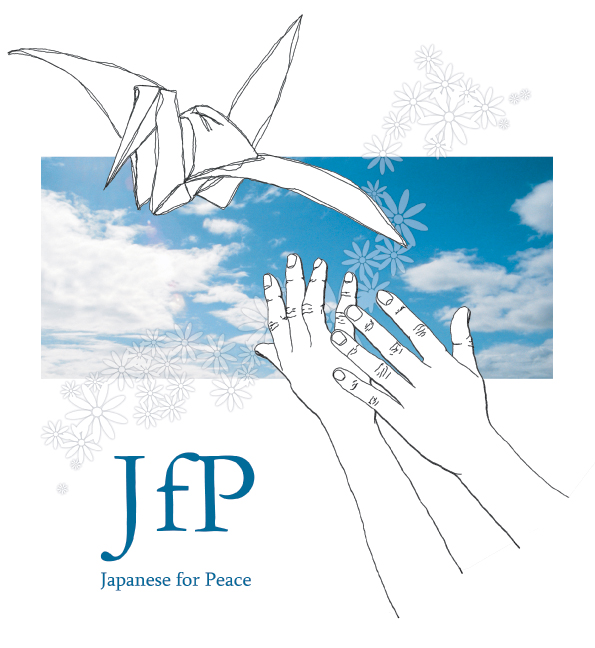25 Mar 2013
“When disasters occur, people are usually united through the necessity to persevere and pull through the hard times. However, this time when the nuclear disaster happened, everything completely fell apart as a result of the nuclear fissions.”
Roughly 30 kilometres from the Fukishima Daiichi power plant in Iitate village of Fukushima prefecture, Hasegawa Kenichi had a dairy farm.
Along with many other residents of the same ward, Mr Hasegawa is living in temporary housing in Date city. But with the determination to share his experiences from the nuclear disaster, he is visiting different countries. “Nothing will make us forget the nuclear accident … we want to continue reporting it correctly,” says Mr Hasegawa.
This month marks the two year anniversary of the disaster. “I want Australians to know the reality of what happened.” Mr Hasegawa and his wife, Hanako came out to Australia with the support of Japan’s NPO Peace Boat, Melbourne based peace group Japanese for Peace and other organisations.
The first place of their six days Australia-wide tour was Melbourne on the 9th. The event was a picnic and talk that took place at the CERES Environment Park. Even though the temperature soared to 34 degrees, approximately 70 people participated.
“In our family of eight, four generations of living was completely snatched away,” Mr Hasegawa begins.
The Fukushima Daiichi nuclear plant explosion happened after the earthquake split open the ground, and the tsunami that followed it.
When the radioactivity first reached Iitate, 30 kilometres away from the power plant, nobody was aware of it. Immediately after the explosion, the radioactive clouds began spreading northwest, towards Iitate. However, it was only long after the radioactive clouds in the area were first noticed that the SPEEDI data (an emergency system that forecast the effect of radioactive particles) was formally released.
A month after the disaster, in April, Iitate was declared as being within the exclusion zone. At the same time of the announcement was notice from the government forbidding them to continue running their dairy farm. The 50 cows that Hasegawa’s wife and the eldest son personally raised were not allowed to be evacuated with the residents.
The Hasegawas were angry. The dairy farm had been their sole provider of food and money. Could they really abandon the cows?
The negotiated outcome was that the government would slaughter two cows in order to detect if there was any radioactivity present; if there were none, then they had permission to slaughter.
In the three months before the cattle were slaughtered, Mr Hasegawa spent his days preparing to leave behind everything affected by the radiation, and throwing out the milk that he couldn’t sell anymore. On the day that he had to take the cattle to be slaughtered, the cows resisted getting in the truck, as if they also knew their fate. The women ran after the truck, crying and apologising. They had lived in Iitate for ten years, and finally when everything started to go according to plan, they lost the cows. Even the men couldn’t hold back their tears.
The cows that were like part of the family, what were they reduced to? Hamburgers or dog food? No one knows.
The Hasegawas chose to leave the cattle. Mr Hasegawa witnessed the wild pigs scrounging for food and eating the remains of the cows that starved to death – scenes that were much too cruel for a dairy farmer to see.
Australian environmental activist Dave Sweeney listens carefully to Mr Hasegawa’s story
It wasn’t just the dairy farms that completely fell apart.
Mr Hasegawa told of his friend, a dairy farmer in Minamisoma, whose wife took their children back to their native Phillipines. “If only nuclear power plants didn’t exist” were the only words he could say before he took his own life.
There was also a 102 year old grandfather who killed himself to avoid being a burden on the families taking refuge in temporary housing.
Mr Hasegawa’s wife Hanako now works at the temporary housing. She looks after people from the same district and helps plan events to make their situation more enjoyable.
“What worries me are the elderly citizens renting out apartments and houses. During the day, their families are out working, and they don’t know anyone in the area.”
There are about 150 elderly citizens who have gotten tired of living in temporary housing for two years, and have returned to Iitate. “However, there are no young people. There are no livestock. There are no shops. There is no hint of life. Is there even a future for a village like this?” Mr Hasegawa asks himself.
According to the government, the decontamination of Iitate is progressing. The focus is on removing the radiation from the top five centimetres of the top soil.
However, Mr Hasegawa is skeptical of the effectiveness of the decontamination.
“Everyone including the mayor of Iitate is saying that we can fix this, we can return to our village. But that was just wishful thinking. I think that the reality is different.”
Of course Mr Hasegawa wants to go back to Iitate. He wants to return to his old lifestyle. They were made to leave, and now they can’t help but reflect upon how good their home was. However, despite how much the residents desire returning, it isn’t a possibility for them anymore.
“I think we need to start thinking about rebuilding our lives in a new place, one that isn’t Iitate.”
After the disaster, Mr Hasegawa created a photo book depicting images of the events in Iitate, which was released in January of this year.
The younger generation are already proactively starting their new lives. Mr Hasegawa’s eldest son has moved to Yamagata prefecture with his wife and two children. As he still wanted to continue dairy farming, they were given 45 cows and, alongside other friends, started farming in Fukushima city. However, the commute takes over three hours round trip, and even longer when there is snow. Despite this, he still commutes daily between Yamagata and Fukushima city.
“For the New Year celebrations this year our children and grandchildren celebrated together. It was very enjoyable,” Hanako says. “At the end of the year, our children said “Mum, for New Years we’ll prepare everything, so you don’t have to do anything at all.” They organised a big celebration for their father’s 60th birthday. In such small temporary housing everyone sleeps together in a huddle, you see. It was fun.”
“One of my grandchildren has just started taking her first steps. She was in her mother’s tummy when the disaster happened. It makes you realise how quickly time passes.”
“The saddest thing is the children. There are already children being diagnosed with abnormalities in their thyroid glands. Also the discrimination against the children in Fukushima is happening too, as if being exposed to radioactivety is contagious. The same thing has happened with the children that grew up in Hiroshima and Nagasaki after the nuclear bombings. We have to create a society where this kind of thing doesn’t happen again. More than anything, what happened in Fukushima should never happen again.”
Article & photos: Noriko Tabei
Translation: Meagan Sneddon


Following Mr Hasegawa and his wife’s visit, with the support of Peace Boat and Japan for Peace, 12 middle school students from Fukushima’s Minamisoma city will be visiting Melbourne at the end of the month. More details can be found at the Japan for Peace website.







